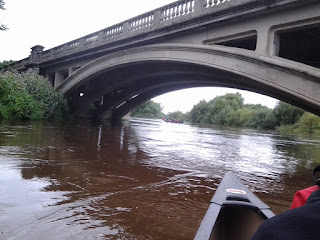 |
| From left: Valerie, Dave, Maria, Sharon & John Image: D. Rainey |
Everybody got on so well and and had such a great time botanising together in the field, that they decided to stay in touch and meet up again whenever they could. And so it came to pass that... but I'll let Sharon take up the story at this point!
 |
| Drumnaph
Nature Reserve, Co. Derry with Carntogher Mountain in the background. |
"It is my pleasure to write a wee piece on this special place as it is a local haunt of mine. The diversity of habitats within it are reminiscent of a traditional Irish farmed landscape and the hard work that has gone into ensuring its conservation is admirable.
 |
| Botanists filling in their recording cards. Image: M. Long |
"We were met by the lovely Kelley Hann in the newly created visitor carpark just off the Halfgayne Road in the townland of Carntogher. Kelley moved to the farm a few years ago along with her husband Glenn White and their two children, in order to take care of the reserve. Kelley kindly spent some time informing us all about this unique community owned nature reserve and its recent history.
 |
| Conservation graziers are used, to maintain species-rich habitats on the reserve. Image: S. Spratt |
"The site is approximately 130 acres and contains a mosaic of semi-natural habitats ranging from ancient woodland to species-rich wet grassland to lowland hay meadow vegetation and fen vegetation. There is a 10 year conservation management plan in place for the nature reserve which includes extensive conservation grazing practices (see image above left) alongside ancient woodland management techniques.
 |
| Sharon tweeted this photo with the caption: "When ye don't even get past the spoil heap in the corner of the 1st meadow, ye know yer on a @BSBIbotany meeting" |
"Let’s start with the carpark because that is where all the
best BSBI botanists begin! Here I should mention the presence of a rather
handsome looking dry stone wall built by local volunteers.
"Amongst many others, Polygonum aviculare sensu stricto (Knotgrass) and P. arenastrum (Equal-leaved knotgrass) were identified and later confirmed by John Faulkner. Moving into the first field and finding it difficult to lure everyone past the spoil heap in the corner, it became obvious that the whole site could not be covered in one day. Cue the cunning plans forming in one's head to ensure a return visit to this bountiful site in the future!
"Amongst many others, Polygonum aviculare sensu stricto (Knotgrass) and P. arenastrum (Equal-leaved knotgrass) were identified and later confirmed by John Faulkner. Moving into the first field and finding it difficult to lure everyone past the spoil heap in the corner, it became obvious that the whole site could not be covered in one day. Cue the cunning plans forming in one's head to ensure a return visit to this bountiful site in the future!
"The first field we explored was a lowland hay
meadow habitat type, which by this stage, had gone to seed. Here, Glenn told us
about the term "foggage" which is where a grassland meadow is left
uncut and ungrazed and is then grazed in late summer after the grasses have
flowered. This is also known as “standing hay”.
"Here amongst the common hay meadow suspects of Rhinanthus minor (Yellow rattle), Cynosurus cristatus (Crested dog’s tail) and Centaurea nigra (Common knapweed) for example, was an abundance of the Eyebright, Euphrasia arctica (borealis).
"Here amongst the common hay meadow suspects of Rhinanthus minor (Yellow rattle), Cynosurus cristatus (Crested dog’s tail) and Centaurea nigra (Common knapweed) for example, was an abundance of the Eyebright, Euphrasia arctica (borealis).
 |
| "Great times and great weather!" Image: M. Long |
"Following this, we moved into the wetland site proper of the reserve to explore some of the late summer species of these habitats.
"This area was quite species-rich, with lots of plants to keep us busy. In particular, Mentha arvensis (Corn mint), got us talking and checking our ID books.
"The star species of this plant hunt came from the Cyperaceae
family.
"Most of these were found on the bog habitats of Loch Bran.
"Three sedge species in particular elicited excitement amongst the group given that they have sharply contrasting distributions across Ireland but were all found in this one site:
Many thanks to Sharon for this account of a great day's botanising with lovely people - and for telling us about Drumnaph Nature Reserve and how it's managed for wildlife. What an interesting site!
"Most of these were found on the bog habitats of Loch Bran.
"Three sedge species in particular elicited excitement amongst the group given that they have sharply contrasting distributions across Ireland but were all found in this one site:
- Carex diandra (Lesser tussock sedge), is characteristic of wet fens, primarily in the centre of Ireland but extending into the north. It is noticeably more widespread in Ireland than in GB.
- Carex limosa (Bog sedge), occurs largely in bog pools in the west but with scattered occurrences further east.
- Finally, Carex pallescens (Pale sedge), has a very pronounced northern distribution, being almost confined to Ulster with a few scattered occurrences elsewhere.
 |
| John Faulkner & Dave Riley discuss differences between Goat and Grey Willow. Image: S. Spratt |
Many thanks to Sharon for this account of a great day's botanising with lovely people - and for telling us about Drumnaph Nature Reserve and how it's managed for wildlife. What an interesting site!













